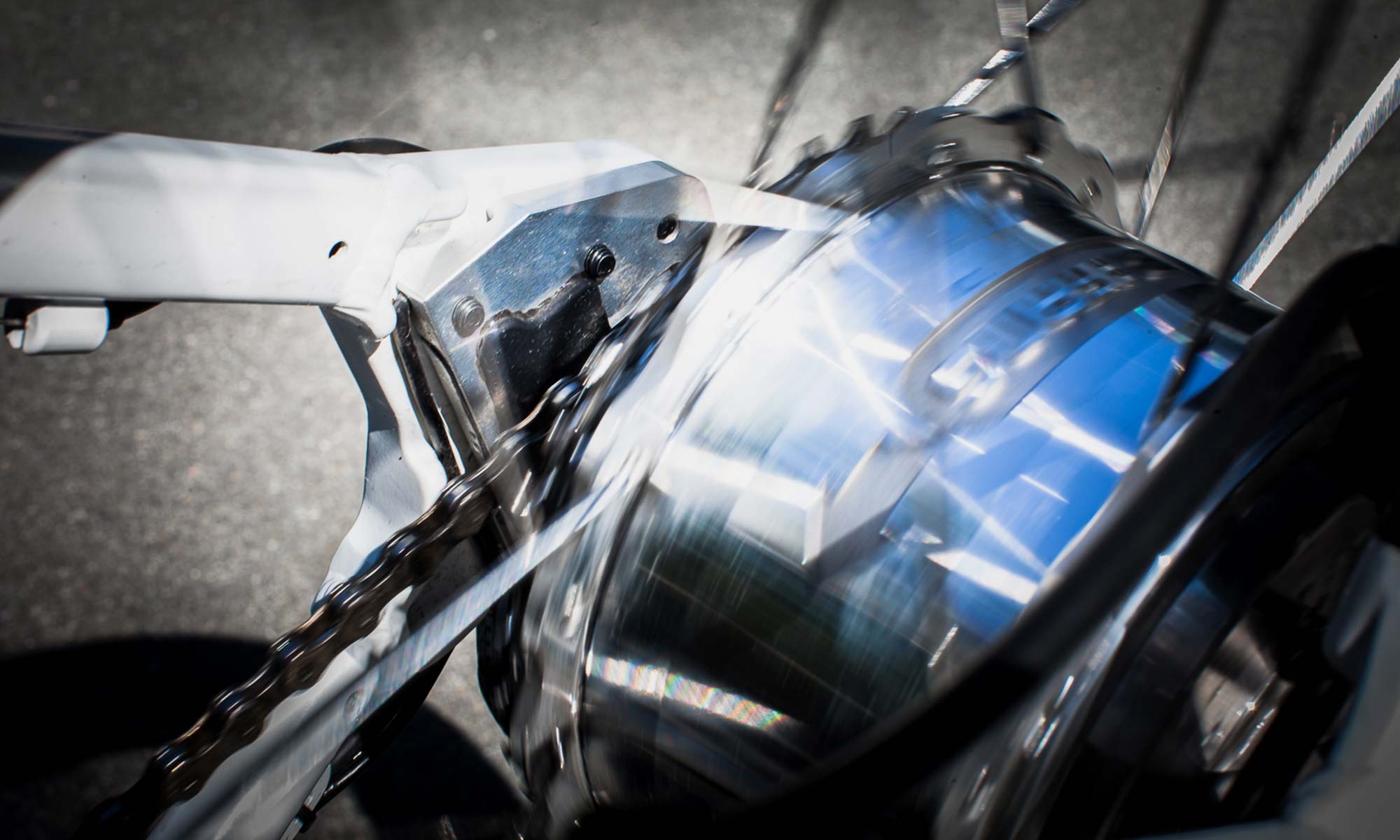This started as an FAQ entry because we’d had a lot of great questions about the “torque sensor” on the new bike, but it got pretty long so here it is, posted in the Bike Garage.
The decision to build the Boar with a torque sensor was based on our past experience with cadence sensor bikes – we think both have their merits, but after riding the Boar with the torque sensor, it was a clear winner for us: we like to “ride”. For further reference go to ElectricBikeReview.com.
The Torque Sensor senses how much “torque” or “force” you apply to the pedals, with the motor delivering increasing power with increasing torque. You can still set the assistance level from 1 (least assist) to 5 9most assist) on the handlebar display as you would on other e-bikes. Here’s some of the things we love:
SMOOTH, PROGRESSIVE POWER DELIVERY
The torque sensor makes the power delivery smooth and progressive. It’s like riding a regular bike but with the advantage of super-human strength. Put it this way, riding away from a stop light with the motor instantly delivering full power is really, really awesome. Same thing goes for riding up hills – grab yourself a low gear from the 1 x 10 SRAM drivetrain and you’ll climb steep hills you couldn’t climb on your mountain bike.
NO THROTTLE
To make the motor produce power, you need to apply force to the pedals, and hence, it requires the rider to pedal to maintain speed just like regular bike but with WAY LESS EFFORT. The Boar does NOT have a throttle, ya gotta pedal. By the way, did you know that e-bikes with no throttle are legally allowed to go faster than bikes with a throttle? In North America that means 20 mph vs 28 mph (32 km/h vs 45 km/h) – for some that’s a pretty good incentive to skip the throttle.
ULTRA “CLEAN” HANDLEBAR / COCKPIT
For the Boar design, eliminating the throttle meant getting rid of THREE wires from the handlebar – the throttle itself plus the two power cut-off wires on the brakes (that are required on e-bikes with throttles in most jurisdictions). Add to that the elimination of the front derailleur shifter cable and that’s FOUR wires gone! E-bike? What e-bike?
INCREASED SAFETY
There’s a few occasions when a rider can find themselves in bit of trouble on an e-bike with a cadence sensor, even at low speeds and at low assistance levels. The power is either on or off – like a toggle switch – and this can cause you to more easily lose control, especially in non-ideal riding conditions: tight urban settings like parking lots, snowy/slippery roads & trails, climbing technical hills, and when carrying heavy cargo, to name a few. The quicker a tire accelerates, the more likely it is to lose traction and slip. So, to have power delivered in a “progressive” way reduces the “rate” of acceleration and hence reduces the chance of having the tires slip. Stay upright. Stay safe.
LONGER RANGE & BATTERY LIFE
Every great bike needs an acronym or two to make it sound like it was designed by a rocket scientist, that’s why we developed our Battery Management System (BMS), a great by-product of using the torque sensor. The great thing about the torque sensor is that it instantly reduces the current going to the motor when you let up on the pedals. No current, no power, no battery drain. You’ll go further on a charge, charge it less often, and your battery will last longer.
Written by
DAVE HEIGWAY






Share:
Calgary Mother Buys Ebike, Sells Family Car
7 Essential Gear Items for Fat Bike Tours